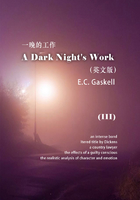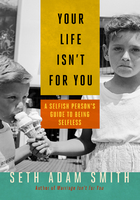West of Kilkenny, in the heart of southern Ireland, is the little town of Galmoy, the birthplace of my great-grandmother, Mary McCormack. A few years ago, during a visit to the Emerald Isle, my wife and I journeyed to the small thatch-covered home where Gandy, as we called her, was born.
Other than her thick Irish brogue, my memories of Gandy are vague. She died when I was 10 years old. Yet as I peered through the windows of the humble little dwelling, I felt strangely connected to her. I was moved with the profound recognition that, at great personal cost, had she not taken the risks that she took, I would not exist.
Mary McCormack was 17 years old when, from the bow of a steamship headed for America, she waved goodbye to her mother and father. She would never see them again.
My great-grandmother's big risk, though courageous, was by no means unique in our family. Her husband, my great-grandfather, himself a Norwegian immigrant, took on the risky profession of a New York cop. Later, my paternal grandfather took the risk of opening a business, an Esso station in Pelham, N.Y. Even the relationship of my parents was the result of a small, but ultimately enduring risk. They met on a blind date. Like all families, and like humanity itself, my family is connected through a long lineage of risks taken.
The Right Risk Question
Throughout the ages, the most basic problem shared by all people is knowing which risks to take, and which to avoid. Although the experience of struggling with a risk decision is both universal and unavoidable, the way each of us goes about deciding which risks to take is highly personal. Each of us takes risks for our own reasons and rationale. When faced with a risk, each of us is left to answer for ourself this simple, but profound, risk-discerning question: Is this the right risk for me?
Risks that are right for us may seem absurdly dangerous and completely unnatural to the spectator, making it difficult for them to support us. But when a risk is right for us, the real harm comes in letting it pass us by. Every risk can be split in two, the risk of action and the risk of inaction, and both have consequences. Had my great-grandmother stayed safe and sound in the sleepy little town of Galmoy, for example, she may have pleased her parents, but she would have had to carry the lifelong burden of a stillborn dream.
It is a mistake to think that Right Risks are danger free. “Right” is not a function of safety, it is a function of compatibility. The Right Risk for you may be entirely wrong for someone else. “Right” is in the eye of the beholder. I am sure that young Mary McCormack was viewed by some as crazy, perhaps even disloyal, for leaving home. But because Right Risks are organic to our own life, the unnatural act becomes the most natural choice for our own progression. With all the runaway irrationality of eloping lovers, when a risk is right for us, we won't let reason get in the way of passion.
Regardless of how unnatural or absurd they may seem to the outsider, Right Risks are those that are in our life's best interest. To say “yes” to a Right Risk is to promote your own development. Thus, when faced with a major risk, accurately answering the question Is this the Right Risk for me? becomes critically important to our life's progression.
A World of Risk
Risk-taking is closely tied to decision-making because it involves rendering a yes/no verdict between staying the same or changing. Our risks nearly always boil down to deciding between should I or shouldn't I, can I or can't I, will I or won't I. Each selection can make us more powerful or sink us deeper into victimhood. Making these straightforward, yet life-altering, decisions requires focused thinking and sound judgment. However, the complexities of the modern age are making it difficult to answer the right risk question with any degree of accuracy. The distractions and diversions of today are infringing on our ability to make good choices. While the proliferation of technology has allowed us to become continuously connected to each other, we have become entirely disconnected from ourselves.
At work or at home, 24/7/365, we are on call, on hold, or online. We have become a Society of The Perpetually Distracted, the result of which is an erosion of our intuitive powers of discernment and discrimination. We are becoming a world of fragmented thinkers, and fragmented thinking makes for ill-considered choices. Consequently, our Right Risk decisions often end up being made in a careless or reckless way. Risk appears to be getting riskier.
Although the technology-driven distraction of today is impeding our ability to make good risk choices, it hasn't stopped us from taking risks. Evidence suggests that, on a global scale, risk-taking is becoming more prevalent and extreme. Consider, for example, these barometers of our increasingly risky behavior:
We are progressively willing to assume more risks with our money. In 2000, some 80 million people in the United States owned stocks (roughly 50% of households), more than at any time in the history of the stock market.[1]
In the United States, there has been a huge expansion of legalized gambling, including pari-mutuel racetracks, televised mega-buck lotteries, riverboat gambling, and Indian and non-Indian casinos. All but two states now have some form of legalized gambling.[2]
People are increasingly willing to assume the risks of living beyond their means. Data from Australia, Britain, and Singapore all show a sharp rise in credit card debt.[3] In the United States, the amount of credit card debt held has tripled during the last decade to more than $700 billion![4] And the future looks no better. Credit card use among U.S. college students has skyrocketed. By senior year, 96% of students own credit cards, and the average number of credit cards held is 6.13.[5]
Globally, the relative force and intensity of amusement park roller coasters grows yearly. In 1994 the top speed was 80 mph. In 2002 it was 107 mph.[6]
Not surprisingly, along with the growth in prevalence and intensity of risk has come an associated growth in the collateral damage that usually accompanies it. Consider these disturbing facts:
In the two and a half years following the burst of the dot-com bubble, U.S. stock market losses were estimated to be $8.5 trillion.[7]
In 1998 alone, some $50 billion was lost on legalized gambling in the United States, a figure that has grown (mostly in double digits) every year for nearly two decades.[8]
The number of Americans declaring personal bankruptcy has risen from 284,517 in 1984 to a record of almost 1.5 million in 2002.[9]
According to conservative estimates from the U.S. Consumer Products Safety Commission, the number of amusement park accidents grew from 3,419 in 1996 to 6,594 in 2000.[10]
What's Going On?
The human condition has always been imbued with risk, but a number of converging factors appear to be acutely intensifying our risk-taking behavior. These factors include boredom, a virtual backlash, risk availability, and the reach for the extreme.
Furious Boredom
Boredom has always been the prime instigator of risk-taking. The philosopher Schopenhauer noted that boredom is worse than suffering to the human condition. But what is unique about the boredom of our age is that it may be the result of being entirely too busy. The great paradox of the modern age is that people are overworked but bored. According to the International Labor Organization, on average, Americans work more than 1,979 hours a year. That is 137 more than Japan, 260 more than Britain, and 499 more hours than Germany. The average workweek for most professionals is 48 hours per week, a figure that scarcely reflects the amount of time people actually spend working because people are increasingly using their time off to get caught up with work.[11] A survey of 2,200 U.S. professionals conducted in March 2002 by Linkage, Inc., a corporate training company, found that 97% of the respondents reported doing job-related work on their vacations and days off, suggesting that we are never not at work.[12] This is compounded by the fact that Americans take fewer vacation days than any industrialized nation.[13] Yet, despite the frantic pace, most people are entirely sedentary all day long. The cubicle has become the modern-day salt mines. For many, work amounts to little more than being tethered to a computer, cranking out a rapid succession of deliverables. While everything is “rush rush,” the only things moving faster are our fingers tapping on the keyboard. Though mentally exhausted, our spirits and bodies thirst to feel alive again. According to one study of 2,500 people, despite living in truly remarkable times, 71% yearned for more novelty in their lives.[14] More and more people are taking risks to turn up the tempo of their lives.
Virtual Backlash
In times gone by, reality was just reality. The more “virtualized” our world becomes, the more people long for a more direct and authentic experience of what is real. Not simulated real, not virtual real, but REAL real. In a world where people communicate in cyberspace chat rooms, send mail through electronic bits and bytes, play “shoot 'em up” at the video arcade, get job training through computer simulation, and are entertained by “reality” television, risk-taking serves as a reality check. When the risks you take are simulations of the real thing, so too are the dangers. While a computer interface can approximate a risk, there are no real consequences for failure, and the experience falls flat. For pure danger-induced excitement, the joystick can't match the stickshift.
Unfettered Access to Risk
Today's risk-takers simply have more access to more intense risk experiences. One reason is the explosive growth of the adventure travel industry, which now generates some $110 billion in annual sales within the United States and, according to the Travel Industry Association of America, is the fastest growing segment of the $500 billion leisure travel market.[15] Nearly 10,000 tour operators offer everything from whitewater rafting trips in the Andes to submersible voyages to the bottom of the ocean floor off the coast of Europe.
Indeed, “cool” risk experiences have become the status symbol of the 2000s. The more outlandish the risk experience, the greater the bragging rights. For less than $15,000 you can brag about traveling at twice the speed of sound while cruising at 85,000 feet in a Soviet-made MiG-25 fighter jet. And for $59,000 you can gloat to your friends about your excursion to the top of Mount Everest (provided that you live to tell about it).[16] Furthermore, our access to risky endeavors is likely to grow. Now that Dennis Tito has broken the stratospheric ceiling by becoming the first civilian to visit the International Space Station (at a personal cost of $20 million), the sky's unlimited for our access to risky experiences.[17] Outer space is not just for astronauts anymore.
All That's Left Are Extremes
It takes a lot more these days to accomplish something truly extraordinary. 2002 marked the 75th anniversary of Charles Lindbergh's historic solo flight across the Atlantic. In an act of homage, his grandson Erik Lindbergh repeated the feat. 2003 marked the 50th anniversary of the first successful Mount Everest climb. To celebrate the occasion, the sons of Edmund Hillary and Tenzing Norgay went back to the mountain. In both instances the key word is repeat. Today's risk-taker contends with the fact that much of what is grand and gallant has been conquered numerous times over. The remaining choice is to repeat someone else's achievement or attempt more extreme stunts.
For example, in 1960 Joseph W. Kittinger Jr., a test pilot with the U.S. Air Force, became a legend among skydivers by parachuting from 102,800 feet. Just how will this amazing feat be eclipsed? By going to extremes, of course. Cheryl Stearns, a member of the Army's elite skydiving team, the Golden Knights, is planning on breaking Kittinger's record by taking a weather balloon 130,000 feet into the stratosphere—over 24 miles—and skydiving back to earth at speeds in excess of 800 mph.[18] When there is nowhere else to go, we go to extremes.
Today's extremism can also be seen in the popularity of such television shows as Fear Factor, Survivor, and the Fox Cable Network's 54321, a nightly program dedicated entirely to extreme sports. In addition, The X Games, ESPN's veritable Olympics of extreme sports, are now telecast to over 180 countries.[19] But extremism transcends our recreational preferences. These are immoderate times, from gluttonous fast-food consumption, to radical forms of cosmetic enhancement (i.e., Botox), to gangsta-rap lyrics that make the Rolling Stones sound parochial. In today's world, contentment is found on the fringes.
Risk Is Always There
Though risk may be easiest to observe in macro level trends, it often hides unseen in the normal routine of our everyday lives. Risk is ever-present but only noticed when we stop to think about it. Consider the risks you face in your own life:
Do you regularly drive 10 mph over the speed limit? While talking on a cell-phone?
Do you smoke?
Are you obese or overweight?
Did you ever care for someone with a communicable disease?
Did you ever engage in risky or unprotected sex?
Have you ever converted from one religious or political belief system to another?
Did you ever move away from home?
Have you ever left one career for an entirely different one?
Have you ever strongly disagreed with your boss but bit your lip and said nothing?
Is there something that you really want to do but fear has prevented you from doing it?
As your answers likely suggest, almost everything we do (or fail to do), on some level, involves a risk. Whether it is leaving home, fighting for our beliefs, confronting the schoolyard bully, or simply trying something new, risk-taking is as elemental to life as inhaling and exhaling. Yet, given risk-taking's central role in the human experience, it is strange that there is no guide for improving one's risk-taking abilities. Instead, we are left to grope through our risk experiences like mapless explorers.
Someone Had To Do It
We live in a risk-saturated world. Rather than wait for risk to be inflicted upon us, we should press our chest against risk's bow, and wave goodbye to the safe shores of sameness with all the anguished optimism of an immigrant headed to a new world. Risk is, and always has been, our vehicle to the future. I have written Right Risk to help you face your risks squarely and intentionally, so that you can take the risks that are right for you. By drawing on the experiences of successful (and not-so-successful) risk-takers, as well as my own experiences at the extreme edge of risk (which you'll read about in the next chapter), I have created 10 Right Risk principles that provide a map for helping you navigate through your risk endeavors. Not only will following these principles make your risks more successful, on balance, they will make them more enjoyable as well.
I believe there is a right way and a wrong way to pursue a risk. The wrong way doesn't always lead to failure or injury, but it always leads to regrets. The right way, conversely, doesn't always lead to success or safety, but it is always regret free. The risks we regret the least, Right Risks, are those that uphold our principles. They are those that have been taken only after a careful evaluation of our skills relative to the riskiness of the situation. Thus, before moving on to the next chapter, please consider the following questions:
How has risk been an essential part of your family's history?
How is your world riskier today than it has been in the past?
What is the big risk you are currently faced with?
What factors have caused the risk to emerge at this point in your life?
Why haven't you taken this risk yet? What is standing in the way of your pursuing this risk?
In what ways is this risk similar to other risks you have faced in the past? How did those risks pan out? What lessons from those past risks might you be able to draw upon to help you face your current risk?
注释:
[1]R.D. Hershey, Jr. “The Markets: Survey Says 78.7 Million Own Stocks in United States.” The New York Times, Friday, October 22, 1999, Section C, p. 10.
[2]National Gambling Impact and Policy Commission (U.S.), The National Gambling Impact Study Commission: Final Report. (U.S. GPO: Superintendent of Documents, 1999).
[3]“Credit Debt Problems in Australia, Britain, and Singapore.” Asia Pulse, Canberra, September 11, 2002.
[4]N. Dillon, “Debt Load an Econ Crunch, Climbing Credit Card Bills May Crimp Consumer Spending.” New York Daily News, July 30, 2001, business section, p. 23.
[5]D. Aird, “Student Credit Card Use Rockets.” The Atlanta-Journal Constitution, July 14, 2002, section Q, p. 1.
[6]K.Yoshino and C. Liu, “Thrill Rides' G-Forces Also Being Felt in Court.” Los Angeles Times, May 27, 2002, p. 1.
[7]J. Walker, “Market ends '02 in Bear's Shadow.” The Atlanta Journal-Constitution, January 1, 2003, p. D1.
[8]National Gambling Impact and Policy Commission (U.S.). The National Gambling Impact Study Commission: Final Report.
[9]B. Gravely, “Personal Bankruptcies Set Record.” Chicago Sun-Times, February 20, 2002, financial section, p. 59; and F. Harrop, “Economy is Full of Worst-Case Scenarios.” The Atlanta Journal-Constitution, December 27, 2002, p. A15.
[10]Consumer Product Safety Review, Winter 1999.
[11]S. Greenhouse, “Americans' Lead in Work Hours Grew in 90's.” The New York Times, July 10, 1999, late edition, final, section A, p. 8.
[12]M. Jackson, “It's 5 P.M. Friday: Know Where Your Weekend Is?” The New York Times, March 11, 2002.
[13]“Where Has All The Time Gone?” The Atlanta Journal-Constitution, May 12, 2002, p. A10.
[14]“Yawn: These Are Such Exciting Times.” The New York Times, February 20, 2000, section 4, p. 7.
[15]D. Leeth, “Travel on the Wild Side: Risk-taking Tourists Seem Eager for Adventure After Sept. 11.” The Denver Post, May 19, 2002, travel section, p. 1; and “Yes You!” The Washington Post, March 18, 2001, final edition, p. E01.
[16]B. Urstadt, “Out There.” Worth, April 2002, pp. 86–91.
[17]D. France, “One Real Space Cowboy.” Newsweek, March 21, 2001, p. 43.
[18]C. Salter, “Leap of Faith.” Fast Company, April 2002, pp. 94–99.
[19]C. Grimshaw, “Living Dangerously.” Sports Marketing, March 29, 2002, p. 35.















